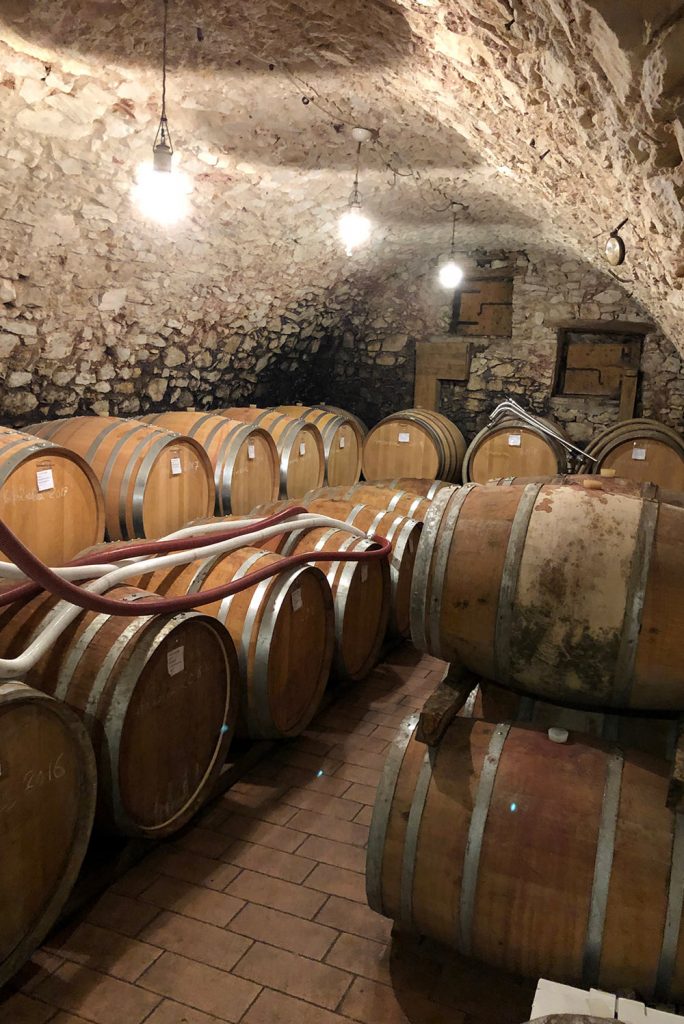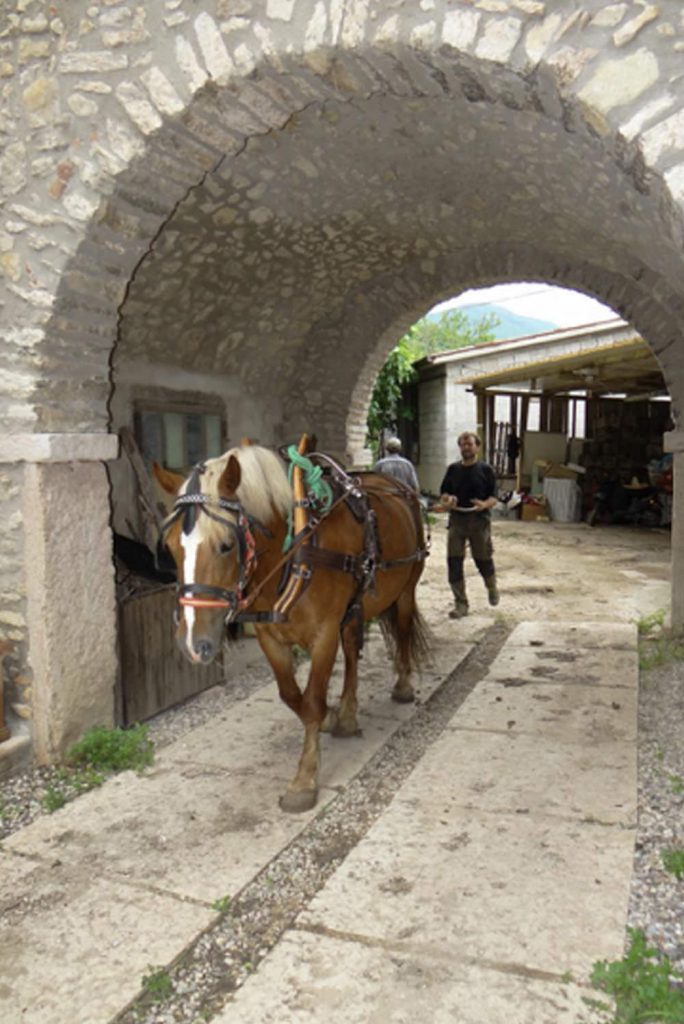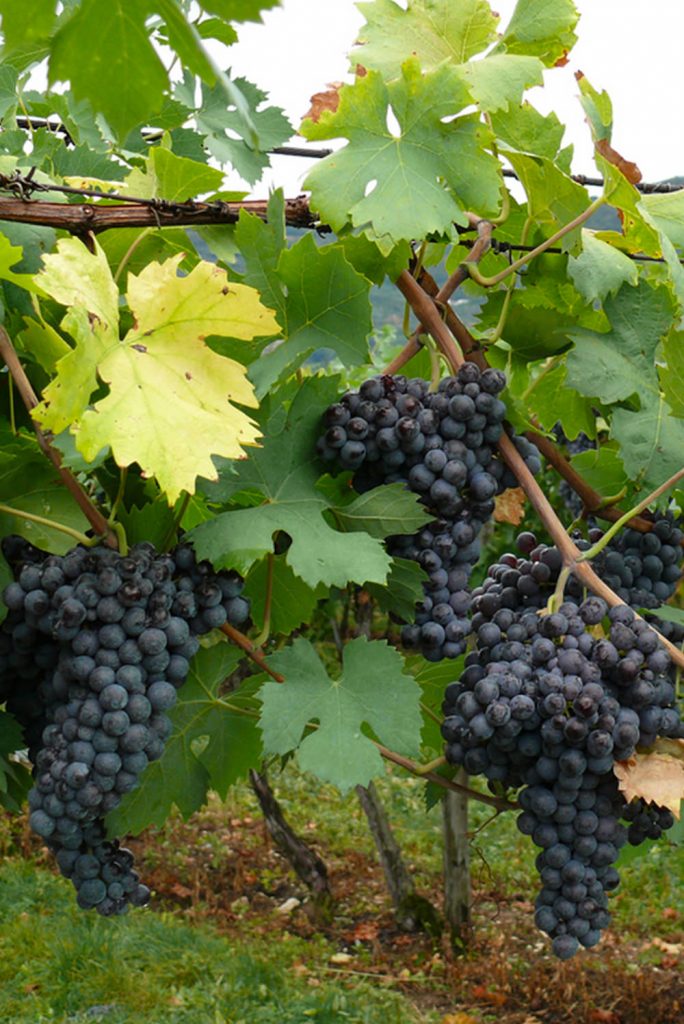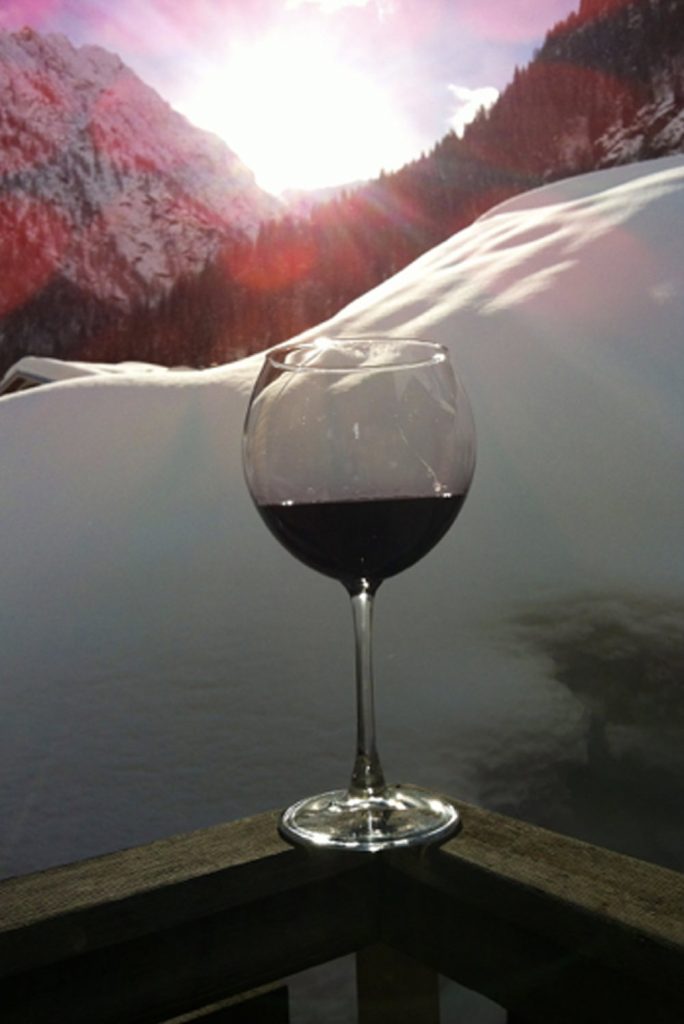We arrive on a dirt road, winding its way between traditional dry stone walls. Around us there are houses, olive trees, fruit trees, meadows, fields. A small vineyard can be seen at the top of the hill. Below us, vines are also grown at the bottom of the valley where we would expect other crops. Zeno and his little dog Julia give us a warm welcome. Slender, with even features, curly hair and beard, he looks a little like we imagine an ancient Greek philosopher and instantly starts sharing his ideas with us. He believes that humans do not have the necessary intelligence to understand that we must live in respect and harmony with nature and how every plant and every creature needs its own habitat and loving care. If we aim to obtain more and more, we do so not only at the expense of quality, but above all the sustainability of production. Then it becomes necessary to add synthetic ingredients and fertilizers, which compromise the authenticity, naturalness and originality of the product.
While we are tasting the white wine “Inanfora” – in reality it is an “orange” wine, or rather a white wine made as if it were a red – he explains how, with the boom of Amarone and Ripasso, he was advised to remove the white vines and replace them with those suitable for red wines. He refused, because he did not want to damage the old vines.
“These are old clones of Garganega and Malvasia Istriana”, he explains. “This winery belonged to my wife’s family. I was a farmer elsewhere, and I found myself with this vineyard, with rows of white grapes, planted by the ancestors who wanted to drink white in summer, but could not afford to buy the ones from nearby Soave. I could have upped my production of red, but why destroy this unique patrimony of nature? I’m against this absurd habit my colleagues have here, where vines are eradicated and replaced by younger plants when they age and yield less. It’s costly, it’s disrespectful and not sustainable. And then, old vines yield fewer grapes, but their roots reach layers of soil and mineral well below the ground, which give them a richness, young grapes will never have. So, I kept these white vines and make wine as I know, that is, as if it were red, and I aged it in terracotta amphorae, because my oak barrels are for red.”



This anecdote reflects Zeno Zignoli’s philosophy: the search for harmony beyond profit, something you can feel in his wines. “Inanfora”, by the way, has a unique flavour to it, which splits opinions. We love its notes of green apple that remind us of Calvados, without the powerful alcohol content and heaviness, but agree that it may not be everyone’s favourite. Then we taste the Valpolicella Classico Superiore 2014 (not a good year) and are overwhelmed by spices, berries, aromas of the highest intensity. According to Zeno, this should not be drunk until it is at least 10 years old, so in 2024. Nonetheless, we conclude that it is better than most Amarone we had tried in our short time in Verona and Valpolicella. Cannot wait until 2022 to try his Amarone 2012! We leave Monte dei Ragni when darkness arrives, a little inebriated from all the flavours, not from alcohol… It is time for dinner and we stop at “Osteria N°1” in Fumane. The very friendly owner asks us what we want to drink. We reply that we have just been to Monte dei Ragni and he says: “Then you have already drunk the best there is, I cannot give you any bottle of that level, and I do have good wines!” A toast to honesty!
A few months later, we plan another visit at Zeno’s. Caught in a traffic jam we reschedule to meet just after lunch, so that we can have time for other appointments as well. As we enjoy a quick lunch, Zeno steps into the “trattoria”. He cannot see us, but we can see that he is carrying a box with zucchini and tomatoes. He exchanges a few pleasantries with the owner, gives him the box of vegetables, and in return receives a glass of beer! After another short exchange, he drinks a coffee and leaves. Wow, so it is true that he tries to avoid using money, and prefers to exchange his produce, rather than buy in supermarkets.
Outside, the temperature is around 38°C. Zeno takes us instantly inside the cool cellar. We agree not to drink wine. As we chat, he tells us how he went to Guatemala for a cooperation project. His job was to teach the local population how to extract seeds from the plants they farm. He said that they learnt quickly and were happy to not have to buy seeds from large corporations, which would increase prices every year and keep them in a state of dependence. “As I was there”, he tells us, “I observed how some of these groups live. There was one, where farming, fishing and hunting were free, on the condition that whatever was fished, hunted or harvested was shared with the entire tribe. They were well fed”. He pauses and then continues: “The river where they lived was full of fish, because they only caught as much as they could eat. The neighbouring tribe asked to be allowed to fish there, too. So I went to observe this other group of people as well.
They had different rules: only certain people were allowed to fish, and they could sell the fish or exchange it for meat or corn, but in turn were not allowed to farm or hunt. They had fished the river empty, and thus were now looking for new waters as their source of income was gone”. He concludes: “I saw with my own eyes what it means to not ensure sustainability. It leads to short-time wealth. This wealth will remain in the hands of a few, and everyone else will struggle. We need to learn from this!” Then he tells us it is time for his afternoon nap. In this hot weather, he gets up really early to milk the cows, feed the ducks and chickens and tend to his horses, before he starts working in the vineyard. He will wait until the sun goes down to resume his chores in the fields, as the horses refuse to work in the heat.

